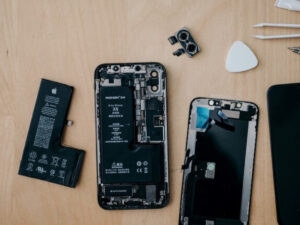In an age marked by technological advancement and the proliferation of mobile devices, paying by text message has emerged as a convenient and efficient method for completing transactions. This innovative approach to payments allows individuals to settle bills, make purchases, and transfer funds through the simple act of sending a text. In this article, we will delve into the concept of paying by text message, explore its benefits and applications, discuss security considerations, and examine its potential impact on the future of commerce.
Understanding Paying by Text Message:
Paying by text message, also known as “text-to-pay,” leverages the ubiquity of mobile phones and SMS (Short Message Service) to facilitate financial transactions. Instead of using traditional payment methods such as credit cards or cash. Users can authorize payments by sending a text message containing relevant payment information.
How It Works:
The process of paying by text message involves a series of steps that are designed to be user-friendly and secure:
- Registration: Users typically need to register with a payment service provider or link their mobile numbers to their payment accounts. This establishes a secure connection between their phone numbers and payment methods.
- Initiating a Payment: When it’s time to make a payment, the user sends a text message with a designated keyword or code to the provided number. This keyword might be associated with a specific bill, purchase, or recipient.
- Verification: To ensure security, the payment service provider may respond with a verification code. It may ask the user to confirm the payment by replying with a specific code or keyword.
- Authorization: Once the payment is verified, the user confirms the transaction by sending an authorization code. This step confirms the user’s intent to proceed with the payment.
- Completion: After receiving the authorization, the payment service provider processes the payment and sends a confirmation text to the user. Acknowledging the successful transaction.
Benefits of Paying by Text Message:
- Convenience: Paying by text message eliminates the need for physical cards, cash, or even logging into online accounts. Users can complete transactions with a few simple text messages, making it a seamless experience.
- Accessibility: Pay by text message is accessible to anyone with a mobile phone, regardless of whether they have access to advanced smartphones or the internet. It caters to a wide range of users.
- Speed: Sending a text message is quick and requires minimal effort. As a result, payments can be completed swiftly, streamlining the checkout process.
- User-Friendly: The process of paying by text is straightforward and doesn’t require users to navigate complex interfaces. It’s particularly appealing to individuals who are less familiar with digital payment methods.
- Immediate Confirmation: Users receive immediate confirmation of their payments via text. Providing them with peace of mind and a record of their transactions.
- Bill Settlement: Paying by text message is particularly useful for settling bills, subscriptions, and other regular payments. Users can set up automated payments through text.
- Reduced Friction: By eliminating the need to input payment details manually. Paying by text reduces the potential for errors and friction during the payment process.
Applications of Paying by Text Message:
- Retail and E-Commerce: Retailers can offer customers the option to complete purchases by sending a text, enabling quicker and more convenient transactions.
- Utilities and Services: Paying bills for utilities, subscriptions, and services can be simplified through text-to-pay methods, enhancing user satisfaction and reducing late payments.
- Non-Profit Organizations: Charities and non-profit organizations can leverage text-to-pay to facilitate donations and fundraising efforts, making it easier for supporters to contribute.
- Restaurants and Food Delivery: Paying for meals at restaurants or food delivery orders can be expedited with text-based payments, reducing wait times for customers.
- Ticketing and Events: Event organizers can provide attendees with the option to pay for tickets or access using text messages, improving the efficiency of entry processes.
Security Considerations:
Security is a paramount concern when it comes to financial transactions. Payment service providers take several measures to ensure the safety of paying by text message:
- Authentication: Users are required to verify their identities through codes, keywords, or PINs. Ensuring that only authorized individuals can initiate payments.
- Encryption: Communication between users’ mobile devices and payment service providers is encrypted to prevent unauthorized access to sensitive information.
- Multi-Factor Authentication: Some payment providers implement multi-factor authentication, requiring users to provide multiple forms of verification before completing a transaction.
- Fraud Detection: Advanced fraud detection systems monitor for unusual or suspicious activity, flagging potential fraudulent transactions for investigation.
The Future of Commerce:
Paying by text message represents a significant shift in how financial transactions are conducted. As mobile devices continue to play an integral role in our daily lives. This method of payment has the potential to reshape the future of commerce in several ways:
- Inclusion: Paying by text message extends financial inclusion to individuals who may not have access to traditional banking methods or internet-enabled devices.
- Simplified Transactions: With the rise of the Internet of Things (IoT), paying by text could extend beyond phones to include interactions with other devices, making transactions even more seamless.
- Global Reach: Paying by text message could bridge the gap between individuals in developed and developing countries, offering a common and accessible method of payment.
- Redefining Payment Norms: As more businesses adopt text-to-pay options, consumers may increasingly expect this level of convenience, leading to a shift in payment norms.
Conclusion:
Paying by text message is a testament to the power of technological innovation in simplifying everyday tasks. By harnessing the ubiquity of mobile devices and the ease of text communication. This method of payment offers unmatched convenience, accessibility, and speed. As businesses and individuals continue to embrace this technology. It has the potential to redefine the way we handle financial transactions and reshape the landscape of modern commerce.
